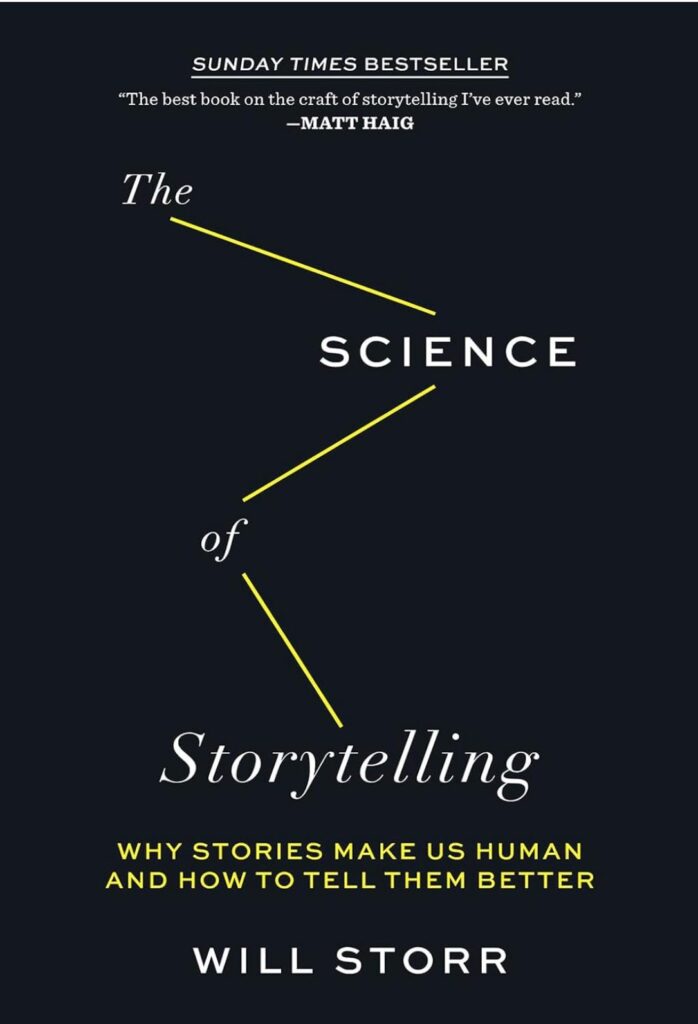I love writing Hucow stories. There’s something so fascinating about watching a character undergo a transformation, both physically and emotionally, as they embrace a new reality.
It’s a journey, not just for the Hucow, but for the reader as well. When it comes to setting the stage for that transformation, especially in the Hucow genre, it’s all about creating an atmosphere that draws readers in from the start and builds excitement.
Whether it’s the mysterious setting of an alien farm, or a remote countryside estate with a powerful Alpha in control, how you introduce and execute the transformation is key to grabbing attention.
I’ve experimented with a few different ways to approach this, and today I’m going to share what has worked for me—and what could work for you in your own Hucow stories.
Table of Contents
ToggleWhy the Setting Matters
Let’s start with the basics. In any Hucow transformation, the setting plays a crucial role. It’s where your character’s journey begins and where they’ll slowly (or rapidly) evolve into their new form. I think of the setting as the first nudge toward transformation—it hints at what’s coming, and it subtly changes the atmosphere for the reader.
In a Hucow story I wrote recently, I placed the transformation in an old, sprawling farmhouse. The protagonist was a city girl, sent to this remote location where the land itself seemed to hum with power.
From the moment she stepped onto the farm, she felt something shift inside her. The isolation of the setting amplified her sense of vulnerability, and it made her eventual transformation into a Hucow feel inevitable, almost like the landscape itself demanded it.
Tip: Make the Setting Reflect the Transformation
In your story, think about how the setting can reflect the changes your character is going through. Is the environment lush and fertile, hinting at themes of growth and breeding? Or is it dark and cold, emphasizing the character’s loss of control? Use the setting to create anticipation for what’s to come.
Creating Tension with Power Dynamics
Hucow transformations are rarely just about physical change. They also involve deep power dynamics, and the tension between the Alpha and the Hucow is a major part of what makes these stories so captivating. The first chapter or two is where you lay the groundwork for that tension, and trust me, if you do it right, your readers will be hooked.
I often like to show the Alpha as someone who is both intimidating and reassuring. In one story, the Alpha was the owner of a large farm who made it clear from the start that he controlled everything. Yet, there was a tenderness in his approach to the Hucow’s transformation. His words were firm, but he promised to take care of her, to guide her through the change. This balance of dominance and care is what keeps readers invested.
Tip: Use Dialogue to Build Tension
The conversations between your characters can do a lot of heavy lifting. Maybe the Alpha starts off distant, watching the Hucow with a keen eye, knowing she’s about to transform. Or maybe the Hucow is already nervous, unsure of what’s happening to her body, and the Alpha offers cryptic reassurance.
Example: Alpha: “You’ve felt it, haven’t you? The change starting inside you.”
Hucow: “I… I don’t know. Something feels different.”
Alpha: “That’s just the beginning. Soon, you’ll be ready.”
This back-and-forth sets up anticipation. Readers know the transformation is coming, and they’re waiting for the moment it finally happens.
Transforming the Hucow: The Physical and Emotional Shift
When we talk about Hucow stories, we can’t ignore the physical transformation. It’s a core part of the genre, and for many readers, it’s the reason they’re reading. But what I’ve learned is that the emotional transformation is just as important. The Hucow is not only changing on the outside; she’s accepting a new identity and role.
In one of my stories, the Hucow began to notice small changes in her body—her breasts felt fuller, her skin more sensitive. But it wasn’t until she started to emotionally surrender to her new life that the full transformation occurred. That’s what made the scene powerful. She wasn’t just being turned into a Hucow; she was embracing her new existence.
Tip: Make the Transformation Gradual
Don’t feel like you have to rush the transformation. Let it build slowly, both physically and emotionally. Maybe the Hucow notices the changes but resists at first, not ready to accept what’s happening. The slow build will keep readers engaged and create a sense of inevitability. When the transformation finally happens, it will feel earned.
The Role of Milking and Breeding in the Transformation
Milking and breeding are essential themes in Hucow stories, and they often symbolize the character’s complete transformation. When writing these scenes, I try to use them as a way to show the character’s final surrender to her new life. Whether it’s her first time being milked or a breeding scene with the Alpha, these moments are pivotal.
In one of my favorite stories, the Hucow’s first milking was a scene of both fear and relief. She had fought against her transformation, but when the milking began, she couldn’t deny the pleasure and the sense of completion that came with it. The Alpha, of course, was there to guide her, encouraging her to let go.
Tip: Use These Moments to Show Acceptance
The first milking or breeding scene can be the moment where the Hucow fully accepts her transformation. It’s a powerful emotional turning point, so make sure to highlight her internal struggle and eventual acceptance. Readers love to see that moment of surrender, both to the physical sensations and to her new role.
Building a Sense of Mystery and Intrigue
Hucow stories often have an element of mystery—there’s usually something the Hucow doesn’t know about her transformation or the world she’s entered. Keeping that sense of intrigue alive is crucial to keeping readers hooked. Maybe the Hucow doesn’t understand why she’s been chosen, or maybe there are secrets the Alpha is keeping from her. Either way, adding a layer of mystery will keep readers turning the page.
In a story I read recently, the Hucow was brought to a farm where all the other women had already transformed. She had no idea why she was there or what her role would be, but the tension built with every new clue. It kept me on edge, waiting to see when she would discover the truth.
Tip: Tease Information, Don’t Dump It All at Once
Instead of giving the reader all the information upfront, tease it out. Let the Hucow discover things slowly, and allow the reader to put the pieces together as the story progresses. This creates a sense of suspense and gives the transformation more weight when it finally happens.
Conclusion
In the Hucow genre, the transformation is more than just a plot point—it’s the heart of the story. As writers, it’s our job to make that transformation feel inevitable, powerful, and emotional. By carefully crafting the setting, building tension with power dynamics, focusing on both the physical and emotional changes, and weaving in elements of mystery, you can create a transformation that will resonate with your readers.
Remember, it’s not just about the end result. The journey to that transformation is just as important, and when you take the time to set the stage properly, your readers will be hooked from the very first chapter.
References
If you wish to learn more about the topics I covered in this article, please refer to the following blog posts on this website:
- Grab the Reader’s Attention with a Steamy Opening – Crafting the perfect introduction to hook readers immediately.
- Crafting a Satisfying Hucow Happily Ever After – Ensure your story has a fulfilling conclusion that aligns with reader expectations.
- Writing Cliffhangers in a Hucow Series – How to end chapters or books with tension to keep readers invested.
- Delivering an Emotional Payoff in the Closing – Structuring the story’s conclusion to provide emotional closure and satisfaction.
- Creating Instant Chemistry in the Opening Pages – How to establish attraction and tension between characters in the first few chapters.
- Crafting a Powerful Middle for Hucow Stories – Developing emotional and erotic tension in the middle of your story to keep readers engaged.
Alternatively, below are some external references on this topic that you may find useful:
- Hucow Fantasies – A comprehensive site dedicated to Hucow fiction, providing stories, resources, and a community for writers and fans of the genre.
- Romance Author Resource – A resource hub for romance authors, offering advice, tools, and tips for writing in niche subgenres like Hucow.
- Breeding Fiction Explained – A site that explores the popular breeding trope in erotic fiction, providing in-depth discussions on how to effectively use it in storytelling.
- Exploring Power Dynamics – An in-depth resource on writing power dynamics in fiction, with special attention to dominance, submission, and how to weave these themes into Hucow stories.
- Milking Stories Collection – A collection of Hucow and other milking-themed stories, offering inspiration and tips for crafting compelling scenes focused on milking.
- Writing Steamy Fiction – A guide to writing erotic and steamy scenes, including practical tips for Hucow writers to build intensity and sensuality in their work.
- Transformation Themes in Romance – A website that explores themes of transformation in romance writing, providing insights on physical and emotional changes relevant to Hucow fiction.
- Erotic Writing Tips – A resource for writers of erotic fiction, offering advice on everything from character development to crafting erotic scenes that resonate with readers, including in the Hucow genre.







































